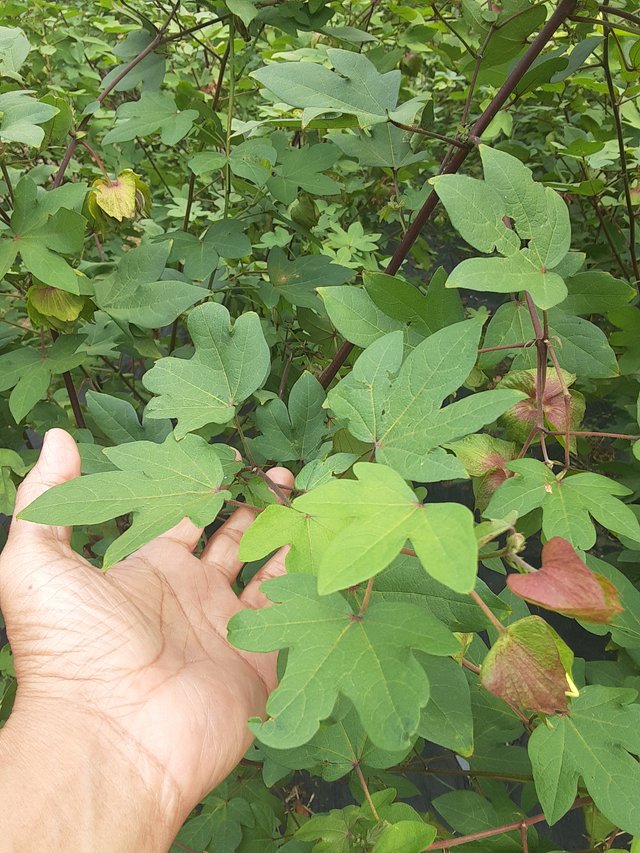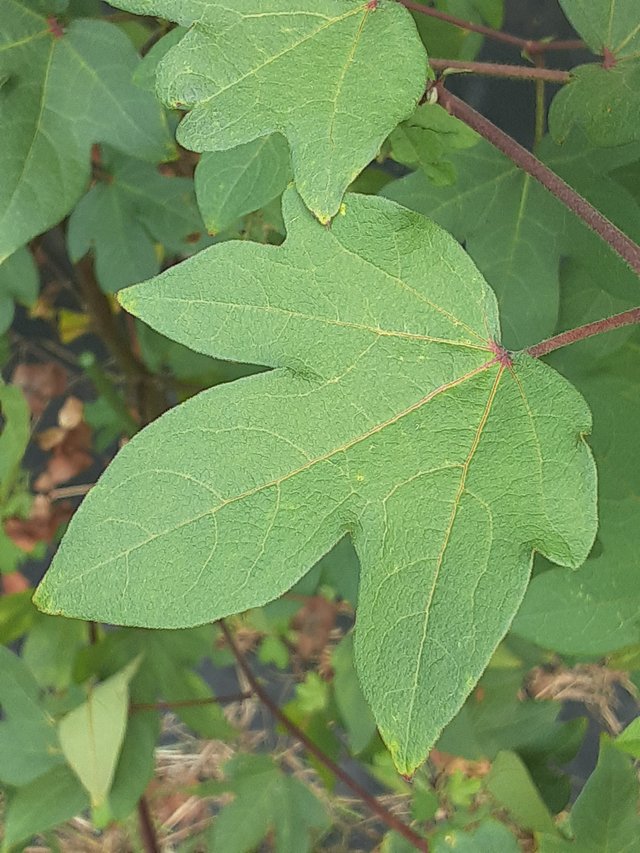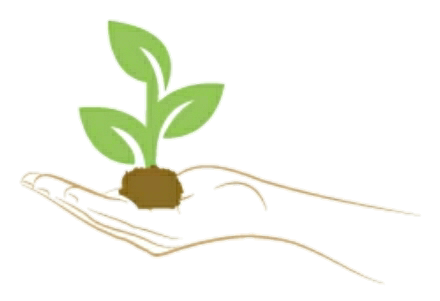
Gossypium herbaceum, commonly known as Levant cotton, is a species of cotton plant native to the Old World, particularly regions like northern Africa, Asia Minor, and India. It's a perennial shrub that can grow up to 6 feet tall.
One of its most distinctive features is its leaves. These are broad, ovate, and have 3 to 7 lobes, giving them a maple-like appearance. The leaves are typically hairy and have heart-shaped bases. They are attached to the plant by long, red-tinged petioles.
The leaves of Gossypium herbaceum play a crucial role in the plant's growth and survival. They are responsible for photosynthesis, the process by which the plant converts sunlight into energy. The chlorophyll pigment in the leaves absorbs sunlight, and this energy is used to convert water and carbon dioxide into glucose, a form of sugar. This glucose provides the plant with the nutrients it needs to grow and reproduce.

In addition to photosynthesis, the leaves of Gossypium herbaceum also help to regulate the plant's water balance. They have stomata, small pores that open and close to allow water vapor to escape. This process, known as transpiration, helps to cool the plant and prevent it from becoming dehydrated.
The leaves of Gossypium herbaceum are also important for the plant's reproduction. The flowers, which are typically yellow with a purple center, grow in the leaf axils. After pollination, the flowers develop into bolls, which contain the cotton seeds. The cotton fibers that surround the seeds are harvested and used to make cotton fabric.
Ref.:
 |  |
Upvoted! Thank you for supporting witness @jswit.
Downvoting a post can decrease pending rewards and make it less visible. Common reasons:
Submit